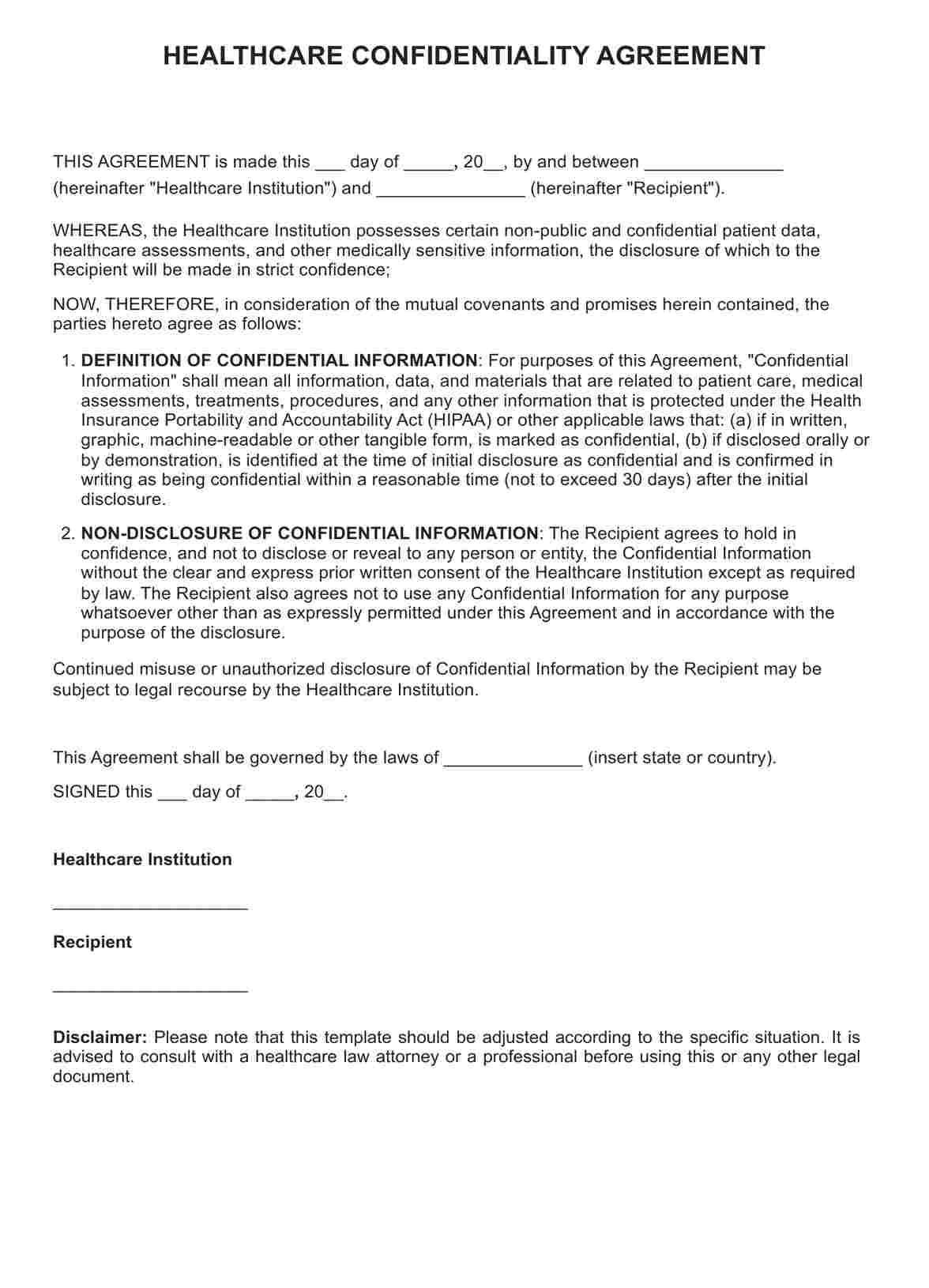Anyone who wants to protect sensitive information uses the confidentiality statement. This can include businesses, non-profits, consultants, volunteers, and more.

Confidentiality Statements
Explore the history and impacts of Confidentiality Statements. Understand their use and types with Carepatron’s guidance.
Use Template
Confidentiality Statements Template
Commonly asked questions
A confidentiality statement is used when you need to share sensitive information with another party and want to prevent unauthorized disclosure of that information.
The confidentiality statement defines what information is confidential, outlines the parties' obligations, and provides legal recourse in case of a breach.
EHR and practice management software
Get started for free
*No credit card required
Free
$0/usd
Unlimited clients
Telehealth
1GB of storage
Client portal text
Automated billing and online payments











